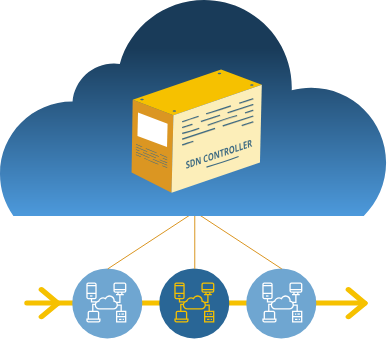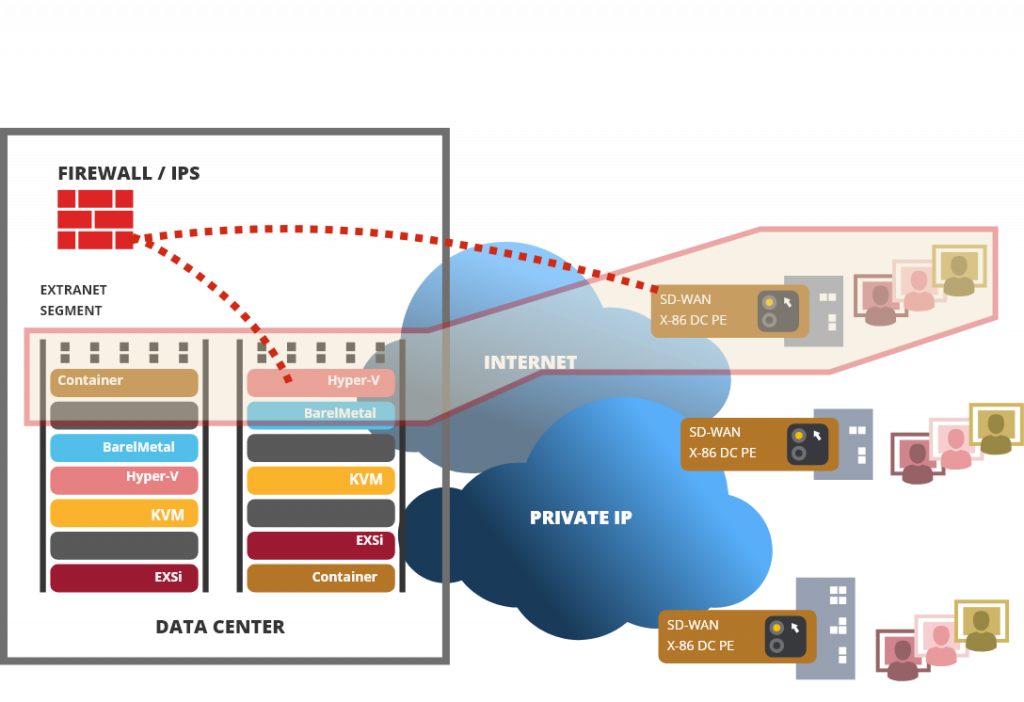Centralized network control
In a model of networks defined by software, the entire network is managed and controlled from a single console, in a way that the creation of new networks does not imply a manual intervention on each element of the infrastructure.
The SDN model allows the integration of both physical and virtualized networks, so that from a single platform both the physical and virtual network can be easily managed.

Network Security
The SDN model allows the implementation of both traditional network segmentation policies as well as micro-segmentation policies within the same network segment. In this way, it is possible to obtain more granular control of the network security and to guarantee that only legitimate traffic is allowed.
Likewise, the control of the SDN allows, through service-chaining, to redirect certain network flows to other external security elements, such as next-generation firewalls for filtering up to the application layer.


Branches interconnection and data center
The SDN model allows to combine SD-LAN networks with SD-WAN in a safe way. The different offices of the company will be able to connect to the data center through encrypted connections, thus eliminating the complexity of managing manually a virtual private network based on IPsec.
Branches interconnection and data center
The SDN model allows to combine SD-LAN networks with SD-WAN in a safe way. The different offices of the company will be able to connect to the data center through encrypted connections, thus eliminating the complexity of managing manually a virtual private network based on IPsec.



